

 |
Search the Site with

|
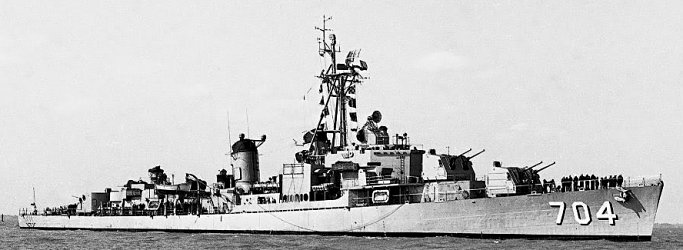 | Sorry, no coat of arms available. |
USS BORIE was one of the ALLEN M. SUMNER - class destroyers and the second ship in the Navy to bear the name. Both decommissioned and stricken from the Navy list on July 1, 1972, the ship was transferred to Argentinia the same day and recommissioned as HIPOLITO BOUCHARD.
| General Characteristics: | Awarded: 1942 |
| Keel laid: February 29, 1944 | |
| Launched: July 4, 1944 | |
| Commissioned: September 21, 1944 | |
| Decommissioned: July 1, 1972 | |
| Builder: Federal Shipbuilding & Drydock Co., Kearny, NJ. | |
| FRAM II Conversion Shipyard: Norfolk Naval Shipyard, Norfolk, Va. | |
| FRAM II Conversion Period: 1961 - June 1962 | |
| Propulsion system: four boilers, General Electric geared turbines; 60,000 SHP | |
| Propellers: two | |
| Length: 376.3 feet (114.7 meters) | |
| Beam: 41 feet (12.5 meters) | |
| Draft: 18.7 feet (5.7 meters) | |
| Displacement: approx. 3,180 tons full load | |
| Speed: 34 knots | |
| Aircraft after FRAM II: two DASH drones | |
| Armament after FRAM II: three 5-inch/38 caliber twin mounts, two Mk-10 Hedgehogs, Mk-32 ASW torpedo tubes (two triple mounts), two Mk-25 ASW torpedo tubes (removed prior to decommissioning) | |
| Crew before FRAM II: 336 |
Crew List:
This section contains the names of sailors who served aboard USS BORIE. It is no official listing but contains the names of sailors who submitted their information.
USS BORIE Cruise Books:
About the Ship's Name:
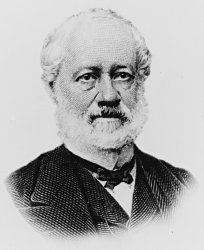 Adolph Edward Borie was born in Philadelphia, Pa., 25 November 1809. He was a successful merchant and served as Secretary of the Navy (5 March-22 June 1869) in the cabinet of President U. S. Grant. Mr. Borie died in Philadelphia 5 February 1880.
Adolph Edward Borie was born in Philadelphia, Pa., 25 November 1809. He was a successful merchant and served as Secretary of the Navy (5 March-22 June 1869) in the cabinet of President U. S. Grant. Mr. Borie died in Philadelphia 5 February 1880.
USS BORIE History:
USS BORIE was launched 4 July 1944 by Federal Shipbuilding and Dry Dock Co., Kearny, N.J.; sponsored by Mrs. A. Nalle; and commissioned 21 September 1944, Commander N. Adair, Jr., in command.
BORIE joined the Pacific Fleet, arriving at Pearl Harbor 4 January 1945. She took part in the Iwo Jima bombardment (24 January) and invasion (19-23 February). After joining TF 58 she participated in the Tokyo raids (16-17 and 25 February), Okinawa raid (1 March), and the raids in support of the occupation of Okinawa (17 March-14 May). During 9 July-9 August she served with TF 38 in its raids on the Japanese home islands. On 9 August a Japanese suicide plane crashed into BORIE's superstructure between the mast and the 5-inch gun director causing extensive damage, killing 48 men, and wounding 66.
The damaged destroyer returned to Saipan and Pearl Harbor for temporary repairs and on 10 September entered dry dock at Hunter's Point, Calif., for permanent repairs. Repairs completed on 20 November, she departed San Diego 4 February 1946 to join the Atlantic Fleet. Since that time BORIE has remained in the Atlantic Fleet, except for one cruise to Korea (6 September 1950-9 June 1951) during which she served with TF 77 and took part in the Hungnam Evacuation.
BORIE subsequently made five European and Mediterranean cruises. During the last of these cruises (28 July-4 December 1956) she assisted in the evacuation of American nationals and United Nations truce teams from Haifa, Israel, and Gaza, Egypt.
Working with Project Mercury, BORIE picked up "Sam", the space monkey after his historic flight out over the Atlantic. BORIE has also operated with such anti-submarine groups as Task Groups Alfa, Bravo, and Task Group 83.4. The fall of 1961 saw BORIE enter Norfolk Naval Shipyard in Portsmouth, Virginia for an extensive FRAM overhaul (fleet rehabilitation and modernization). Improvements were made in her ASW capabilities, overall material readiness, and general habitability when BORIE left the yards in June 1962.
The Cuban Quarantine required an unscheduled at sea period from 22 October until 4 Dececmber 1962. At one point during that period BORIE maintained continuous sonar contact with a Soviet submarine until it was forced to the surface.
On 26 August 1963 BORIE departed for Northern Europe to serve as host ship for Vice President Lyndon B. Johnson's Scandanavian trip. After visits to Copenhagen, Denmark; Turku, Finland, and Portsmouth, England, she arrived in Norfolk on 27 September 1963.
In 1964 BORIE began the year with Operation "Springboard", an amphibious training exercise with units of the British and Dutch Navies off Puerto Rico. Liberty ports included San Juan, Puerto Rico and St. Thomas, Virgin Islands. After a successful "Springboard" '64, BORIE spent much of her spring in ASW operations and became one of the first ships on the East Coast to have an operational DASH (Drone Anti-Submarine Helicopter) system. Fast carrier operations and ASW as well as amphibious support exercises continued until summer. On 3 August BORIE set course for the Mediterranean. The cruise saw BORIE also operating in the Middle East with port visits in Massaua, Eritrea; Aden, Yemen and Karachi, Pakistan. She returned to the US East Coast in early 1965.
BORIE returned to the North Atlantic in summer 1966. She departed her homeport in May and for the following three months visited Norway, Germany, Sweden, Denmark, Scotland, England and Northern Ireland. She returned home in September.
BORIE received three battle stars for her World War II services and four battle stars for her participation in the Korean conflict.
BORIE was decommissioned on 1 July 1972 and transferred to Argentina.
USS BORIE Image Gallery:
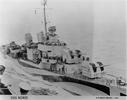 |
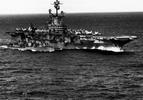 | 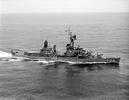 | 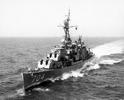 |
 Back to Destroyers list.
Back to Destroyers list.  Back to ships list.
Back to ships list.  Back to selection page.
Back to selection page.  Back to 1st page.
Back to 1st page.